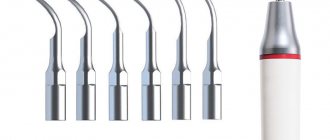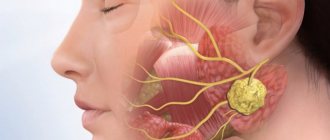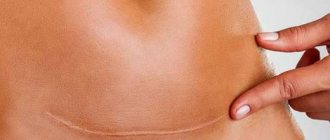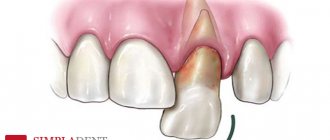Periodontal diseases belong to the group of pathologies of the oral cavity, when hard and soft tissues surrounding the teeth are affected. The periodontium is a retainer that holds teeth in the jaw bones. Its condition affects the health of the entire oral cavity. The main symptoms manifest themselves in the form of bleeding, swelling, and sore gums. Common diseases of periodontal tissue include periodontal disease, gingivitis, and periodontitis.
To alleviate the patient's painful condition, non-surgical treatment is used. For this use:
- Injections;
- Applications;
- Bandages.
As a rule, dentists have ready-made sets of dressings at their disposal, or doctors make their own applications. They are applied to tissues to relieve pain and achieve an anti-inflammatory effect.
Is it true that periodontitis can be cured with implantation?
Implantation is a method of combating not periodontitis itself, but its consequences.
At a later stage of the disease, teeth become loose and fall out, so they have to be replaced with implants. It should be understood that dental implantation for periodontitis has its own difficulties and limitations, since bone tissue is absorbed in this disease. Its sufficient volume is the main condition for successful installation of implants. If periodontitis is in an advanced stage, implantation can be very difficult or even impossible due to a lack of bone volume. That is why patients should begin treatment as early as possible in order to do everything possible to preserve their teeth, and if they are lost, do not miss the opportunity to restore them with implants.
In any case, before installing implants, it is necessary to transfer periodontitis to the stage of remission (stabilization) or, if possible, eliminate the cause of its occurrence.
Contraindications
The main contraindication is individual intolerance to the drug, increased sensitivity of the epidermis. Elderly people should use the drug with caution.
In what cases is it prohibited to use Dimexide:
- renal and hepatic functional failure;
- angina pectoris;
- heart attack, cerebral stroke, coma;
- in the presence of pronounced manifestations of atherosclerosis;
- glaucoma, cataract.
Dimexide should not be used for glaucoma
If you follow the instructions for use, the medicine does not cause side effects. Some patients experience nausea due to the strong garlic odor of the drug; sometimes bronchospasm and allergic reactions develop in the form of burning, redness and swelling of the skin.
Applications at home
Applications at home are usually carried out after a doctor's prescription, and their application is usually not difficult. A special gel is applied to special strips or gauze bandages.
The latter can be of 2 types:
1. Compositions intended for remineralization or secondary mineralization, used to relieve tooth sensitivity.
As a rule, such gels have an acidified taste, since fluoride (one of the main components for remineralization) is more effectively activated in an acidic environment.
Indications for the use of this type of gel are problems such as multiple caries, as well as the presence of cariogenic factors (for example, xerostomia, with prolonged radiation therapy), increased sensitivity of teeth, and fluorosis.
The procedure is carried out in a day or two, the course duration is 7-10 days. The composition is applied to the teeth using an applicator or toothbrush, left on the enamel surface for a certain amount of time, after which the oral cavity is actively rinsed with water. Better results can be achieved using an impression tray or a special two-jaw plastic tray.
As a rule, fluoride content in gels for home use is similar to that in toothpastes. This makes the gels safe even if the drug is swallowed.
Compositions in which the level of fluoride is higher should only be used by a specialist, provided that a saliva ejector is used.
Porcelain dentures also need care. Their owners must isolate the prostheses before the procedure.
Application duration is maximum 4 minutes. The procedure is done after brushing your teeth, and immediately after application it is necessary to rinse your mouth with sodium bicarbonate in solution. It is not recommended to eat or drink for half an hour after rinsing.
2. Gels intended for application to the gum mucosa have antibacterial and anti-inflammatory properties.
This determines the conditions for their use - before and after surgery on the gum or periodontal area, as well as in case of existing inflammation in these areas.
Applications to gums from medicinal plants and herbs
Preparing applications for periodontitis at home is not difficult. The average duration of one procedure is 10-15 minutes. Homemade compresses:
- help relieve inflammation;
- break down plaque and tartar;
- reduce bleeding gums;
- strengthen the dentition.
It is impossible to cure periodontitis in this way, but it is possible to alleviate the symptoms after 1-2 sessions. The duration of intensive therapy is until the alarming symptoms disappear completely. The most effective folk remedies:
- Melt 1 tbsp in a bathhouse. l. May honey, cool, thoroughly rub the gums with warm liquid and do not rinse. By the time the application is completed, it is recommended to reduce salivation.
- Melt natural birch tar using the same principle, then generously lubricate the inflamed gums with the warm mixture. Do not rinse, do not rinse your mouth, reduce natural salivation.
- Squeeze out the pulp of aloe or Kalanchoe, squeeze out the juice through three layers of gauze and rub the resulting concentrate onto the pathology site. The smell will not be the most pleasant, but the healing effect will occur after the second session.
We suggest you familiarize yourself with the dangers of a wisdom tooth that grows horizontally
Compress with Dimexide: how long to keep and how to make?
Dimexide is a topical medicine.
Various forms of the drug are available: ointment or gel, concentrated solution, liquid for external use. Prescribed as an effective analgesic, antibacterial medicine, and has a pronounced anti-inflammatory effect. The therapeutic effect is most pronounced when used topically in the form of a compress or lotion with Dimexide. For this purpose, a concentrated 100% solution of dimethyl sulfoxide is used, previously diluted with water to a concentration of 20 to 50%, depending on the indications and location. The drug, ready for medical procedures, has a pronounced garlic odor, which may influence the limitation of its use.
Applications for periodontal disease
For periodontal disease, as well as for periodontitis, dental dressings are very effective. The procedure involves filling the periodontal pocket with a medicinal composition, as well as applying the latter over the pocket.
The application in this case serves as an anti-inflammatory and analgesic. Moreover, a greater effect can be achieved when a dental dressing is applied for a longer period, up to several days.
The positive effect of the application is explained by the duration of exposure to the medicinal composition. Moreover, the effect extends to the entire periodontal pocket, and is not superficial.
Despite the difference in the composition of preparations for applications, most of them help relieve inflammation and anesthesia, and also relieve swelling and are designed to ensure faster tissue healing.
Indications for the use of periodontal dressings are as follows:
- During the period of inflammation after removing deposits from tooth enamel;
- Chronic periodontal disease;
- After the procedure of curettage and other types of surgical treatment of periodontal tissue.
How to apply a bandage
Before proceeding directly to applying a gingival dressing, consider:
- Presence of anesthetic substances;
- Degree of wound protection;
- Anti-inflammatory effect.
The application process consists of the following steps:
- The doctor professionally cleans the tooth surface, removing deposits;
- The gingival margin is treated with antiseptics;
- After this, the bandage, regardless of its type, is applied so that it fits closely to the gingival margin and cervical part. In this way, periodontal pockets are isolated.
The doctor must make sure that the patient is able to articulate normally. If defects remain after the application of medicinal products, they are corrected: parts that interfere with the person’s ability to speak are cut off.
Duration of wearing from several minutes to three days. Soft bandages are most often used. When a longer period is needed to isolate the wound from the environment, for 3-7 days, rigid/elastic products are used. The procedure can be repeated 2-3 times.
How is periodontitis diagnosed?
It is possible to determine whether a patient has periodontitis or not already at the first appointment, focusing on his complaints and the condition of the oral cavity. Moreover, when diagnosing the disease, special tests are used, the most popular of which is the Parma index. It works as follows: a special Schiller solution is applied to the gums, which reacts to unhealthy tissues and colors them in a bright color, revealing the source of inflammation. There is also an index that determines the level of bleeding, and a Russell test that reveals the condition of not only the gums, but also the bone tissue.
X-ray studies, which determine the degree of the disease that has arisen, are the main ones in the diagnosis of periodontitis. For such a study, you can use a radiovisiograph (a device for conventional targeted X-rays), or an orthopantomograph (an extraoral device that can take a picture of both jaws at once).
Currently, the Florida probe computer diagnostic technique has appeared, which allows you to most accurately determine and record the depth of periodontal pockets - the main pathological manifestation of periodontitis. The examination is easily tolerated by patients and helps the doctor prescribe appropriate treatment.
For periodontitis, a microbiological study is also carried out, with which you can study the microflora of the oral cavity and determine the sensitivity of microorganisms to antibiotics for a more accurate selection of drug treatment.
Another mandatory test is a blood test. It allows you to identify the cause of the disease, which may be either the initial stage of diabetes or a chronic infectious process in other organs and systems, as well as disorders associated with hormonal levels and metabolism.
In the process of diagnosing periodontitis, consultation with related specialists is often required to identify and treat concomitant diseases.
Mechanism of action
A compress with Dimexide, when applied topically, has the following therapeutic effects:
- Anti-inflammatory.
- Analgesic.
- Antibacterial.
- Fibrinolytic.
- Able to change the sensitivity of microflora at the site of inflammation, increase the therapeutic effect of antibacterial medications.
- Performs a transport function: ensures fast and unhindered delivery of other medicinal components used in complex treatment to the site of the inflammatory reaction.
Has a high ability to penetrate deep tissue layers. The maximum concentration of the substance in the lesion is reached 4–6 hours after application, and persists for quite a long time – up to 2–3 days.
Has pronounced analgesic and anti-inflammatory effects.
Dimexide is able to penetrate membranes, including microbial cells, making them vulnerable to antibacterial drugs.
Lotions and compresses made from Dimexide are recommended for use in the treatment of:
- Wound with purulent inflammation.
- Inflammatory processes in the joints, accompanied by swelling.
- Gemartrozov.
- Injuries accompanied by sprain of the ligamentous apparatus, muscle damage.
- Phlegmon of various localization.
- Inflammatory skin diseases accompanied by the appearance of purulent foci.
- Erysipelas, eczematous lesions, trophic ulcers.
- Radiculitis, arthritis, neuralgia with severe pain.
Compresses using solutions of various concentrations have found wide use in surgical practice to improve tissue healing, in order to prevent the occurrence of postoperative wound infection.
What rules should be followed during treatment?
Antibiotics are one of the most dangerous drugs; they should not be taken thoughtlessly, especially when treating children. They are capable of destroying not only beneficial, but also pathogenic microflora. When receiving, follow the rules:
- Before prescribing the drug, the dentist must assess the severity of the disease.
- Increasing or decreasing the dosage of the active substance is unacceptable.
- The main mistake patients make is reducing the duration of the course of treatment. You should not stop taking medications immediately after the condition improves.
- The course of treatment is calculated based on the severity of the disease and the active substance of the medication. It cannot be less than 5 days, and the maximum duration is 2 weeks.
- For maximum absorption of the components of the drug, it is necessary to take medications 1 hour before meals or 2 hours after it.
- Some dentists recommend injecting directly into the gums, but modern medicine rejects this method. It is believed that injections can only worsen the condition. To deliver the drug to the site of inflammation, it is necessary to make applications, use dental gels or ointments.
We suggest you read: Removed a tooth and left the root
Before starting therapy, it is necessary to carry out ultrasonic cleaning of teeth from soft plaque and stone in dentistry, otherwise bacteria in these deposits will provoke a relapse of periodontitis.
Treatment of periodontitis with salt
No less effective is rinsing the gums with a saturated saline solution for periodontitis. This is an affordable folk remedy to combat inflammation of the oral cavity. Table salt contains about 20 useful minerals. It helps not only to treat periodontitis, but also to strengthen the enamel and even the bone tissue of the alveolar process.
The product is used in three ways:
- rinsing with a saturated solution (1 tablespoon per glass of warm water);
- application of a mixture of salt and vegetable oil;
- oral baths on the affected area.
Side effects, contraindications
When using the solution, a burning sensation, itching, redness of the skin, and the appearance of allergic rashes may occur.
Given the rather pungent odor of the product, bronchospasm is possible. In addition, the smell can cause nausea and vomiting in some patients.
It is not recommended to use in patients with severe concomitant pathology:
- Disorders of the excretory function of the liver and kidneys.
- Severe signs of circulatory failure, including cerebral.
- For glaucoma, cataracts.
Dimexide is not prescribed to patients of childhood, during pregnancy and breastfeeding.
Folk remedies and methods of treating periodontal disease
It is possible to cure periodontal disease at home, without resorting to the help of a dentist, only at the initial stage of the disease.
In advanced cases, teeth can only be saved through complex therapy using medications and special procedures.
In such cases, traditional methods of treatment are also relevant, but they act as auxiliary measures.
The most effective traditional methods of treatment are:
- rinsing the mouth with herbal decoctions;
- rinses, compresses and gum massage with oils (the most effective are sea buckthorn and fir oils);
- anti-inflammatory compresses on the gums and applications with beekeeping products.
What can replace Dimexide in a compress?
The price of Dimexide is 50–75 rubles. The drug has no structural analogues, but there are drugs with similar therapeutic effects.
How can a solution of dimethyl sulfoxide be replaced for various diseases?
| Drug name | Indications |
| Petroleum | Dermatological pathologies, arthrosis, purulent processes, eczema |
| Fukortsin | Fungal infections, erosions, violation of the integrity of the skin |
| Trichopolum | Gynecological diseases |
| Dolobene, Capsicam, Hondrasil | Joint pathologies, injuries, bruises, sprains |
Dimexide is an effective and inexpensive medicine with a wide spectrum of action; compresses based on it can cope with pain and inflammation, and eliminate pathogenic microflora. The medicine should be used only as prescribed by a doctor; if used incorrectly, burns and allergic reactions may occur.
General rules of antibiotic treatment for adults and precautions
There are several general rules of administration that must be followed when taking antibacterial drugs:
- Tablets should be taken strictly on time - compliance with the dosage interval is very important to maintain a therapeutic dose of the drug in the blood;
- It is best to take medications with water or tea; do not use coffee, milk or fruit juices for these purposes;
- The duration of the course of treatment cannot be less than 5 days. Also, you cannot arbitrarily reduce the dose - this leads to the selection of bacteria insensitive to the drug;
- With reduced glomerular filtration, the dosage of the drug is reduced;
- Only a doctor can combine several antibiotics with each other;
- Medicines should be stored out of the reach of children and pets;
- Combining antibiotics with alcohol is strictly contraindicated.
Compliance with these measures helps make taking antibacterial agents safe.
Features of the procedure for periodontal disease and periodontitis
For any diseases of the oral cavity, you should consult a dentist about massaging your gums. Usually the doctor himself talks about gum massage as part of a comprehensive treatment. Massaging is possible only after complete sanitation of the oral cavity: treatment and removal of diseased teeth, tartar and other deposits. There are several features:
- for patients with periodontal disease or periodontitis, of the many techniques of massaging with a toothbrush, only the Charters and Shtilman method can be recommended; the rest may become too traumatic;
- when massaging with your fingers, you should start from the healthy gum area, moving towards the diseased area;
- At the end of the massage, you should thoroughly rinse your mouth with water and 7-10 drops of tea tree oil or a decoction of medicinal herbs.
INTERESTING: treatment of periodontitis with folk remedies
The procedure is very simple: take a cotton swab, apply fir oil or honey and salt on it and place the swab on the gum, hold for about 15 minutes. There are also beetroot applications: grate the beets (1 teaspoon), add vegetable oil (10 drops) and apply this paste for the same 15 minutes. Procedures can be performed daily for no more than two weeks, then a break.
We suggest you read: How to get rid of toothache during pregnancy at home?
Technique for massaging gums with fingers
- Brush your teeth and rinse your mouth, wash your hands;
- The massage begins with light stroking; for this, the pads of the index fingers are placed on the bases of the front teeth and move towards the wisdom teeth.
Repeat 5-7 times on both jaws; - Then comes rubbing: from one wisdom tooth to another, massage the gums in a circular motion in a spiral. This exercise is performed with a gradual increase in pressure;
- Grasp the gum with two fingers and squeeze for about 7 seconds.
Next, the adjacent area is massaged, the movement occurs from the center to the sides; - Finish the massage with stroking.
Herbs and plant extracts for periodontal disease
Herbs for periodontal disease were used by ancient healers, but modern dentistry does not deny the value of plants for strengthening gums, disinfecting the oral cavity, stopping inflammation and reducing bleeding. Medicinal herbs can be used separately or in collections.
Periodontal disease can be treated with folk remedies based on medicinal plants in different ways: using them for internal use, as rinses, lotions on the gums, compresses, and additives to toothpaste during brushing. The most effective recipes:
- When loosening the gums, mouth baths with oak bark help a lot. To make a decoction, you need to brew a teaspoon of bark in a glass of boiling water, leave for an hour, after which the liquid must be strained. You need to take baths 3 times a day for 2–3 minutes.
- Applications with cress vulgaris help to treat subgingival abscesses. To prepare the infusion you need to take 2 tbsp. l. fresh or dried herbs, pour boiling water (200 ml), steam for two hours, then strain. Applications should be done in the morning, late at night and between meals. The procedures must be completed over a period of two weeks. It is better to prepare a fresh portion of the infusion every day; you do not need to make 5 liters of the product at once so that it will last for two weeks - during this time its effectiveness will decrease.
- The most effective means for disinfecting the oral cavity and relieving inflammation in periodontal pockets and gums is crushed calamus root. It is recommended to add finely ground powder from the plant to toothpaste; brush your gums and teeth with this mixture every 8 hours for a week. One cleaning will require half a gram of powder.
To cure the inflammatory process, you can rinse your mouth with an alcoholic infusion of calendula diluted in water (a tablespoon of tincture is poured into a glass of warm water). Alcohol infusions are suitable for adult patients; for children, it is better to make a calendula decoction.










